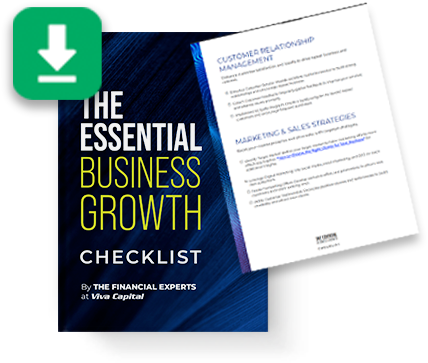
If you’re trying to build a loyal customer base and boost revenue, focusing on customer retention will get you there. On average, your top ten percent of customers spend twice as much as your bottom 90 percent, Smile.io reports. But boosting retention isn’t always as straightforward as it sounds. In this guide, we’ll explore how retention, loyalty, and churn impact your business, then cover some customer retention tips to help you get your numbers moving in the right direction.
Customer Retention is Key to Profitability
Acquiring new customers will always be part of growing your business, but keeping the ones you already have is what drives long-term profitability. Simply put, if you’re spending more and more on marketing while struggling to maintain margins, customer retention is likely the missing link.
While many businesses know this and put effort into retention, initiatives often take a back seat to those that focus on acquisition.
Retention Fuels Sustainable Growth
We often think of retained customers merely in the context that they’re returning, which means we’re receiving revenue again. What’s often overlooked here is that repeat customers actually tend to spend 67 percent more than new customers, as Semrush reports. Their research shows that the longer a customer stays with you, the higher their average order value typically is.
Retention Makes Your Business More Predictable
Businesses thrive on predictability. It makes it easier to manage inventory, staffing, accounts receivable, and more. When you retain customers, you get:
- Reliable Revenue Streams: Repeat buyers help stabilize income and make forecasting easier.
- Higher Return on Marketing Spend: Retaining customers is significantly more cost-effective than acquiring new ones. It can cost up to 25 times more to win a customer than to keep an existing one, according to Harvard Business Review.
- More Word-of-Mouth Referrals: Happy, long-term customers tend to recommend you organically. That means lower marketing spend, higher trust from new prospects, faster sales cycles, and increased retention overall.
Customer Retention Runs Deeper Than Repeat Visits or Orders
The value of customer retention is clear, but the meaning behind it is often misunderstood or confused with other related concepts.
Customer retention is the rate at which your business keeps customers coming back after their initial purchase. It shows how well you maintain relationships and turn one-time buyers into long-term customers.
Strong retention is a sign that your products, service, and overall experience are meeting expectations. It also creates more stability in your business by supporting predictable revenue and reducing the pressure to constantly find new customers.
Customer Retention vs. Customer Loyalty
Retention and loyalty are often used interchangeably, but retention is about behavior, and loyalty is about mindset.
- Customer Retention: A customer is considered retained if they return and continue making purchases after their initial transaction.
- Customer Loyalty: A customer is considered loyal if they feel committed to your brand and consistently choose it over competitors. It tends to build slowly. For instance, 33 percent of consumers say it takes three purchases to create brand loyalty, per Yotpo. Meanwhile, 37 percent say it takes more than five purchases.
Customer Churn Comes at a Cost
Customer churn, or the rate at which buyers stop doing business with you, can quietly undermine growth. It’s also costly, causing U.S. providers to lose $168 billion per year, according to Semrush. There are non-financial challenges that come with high churn rates, too.
The Efficiency of Your Marketing Budget Reduces
When churn rises, a growing share of your spend must go toward replacing lost customers. Because it costs more to replace than to retain, you spend more, and your customer base grows more slowly, if at all.
Your Sales Team Faces Added Pressure
Your reps spend more time chasing new business and less time strengthening existing relationships that can potentially produce more revenue.
Operational Costs Rise
Most businesses invest in new customers in some way, whether through formal onboarding processes or increased support at the onset of the relationship. When those customers are lost early, the investments are lost or the value diminishes. It’s easy to get caught in a cycle of repeated investments that don’t pan out.
6 Proven Customer Retention Tips to Drive Long-Term Loyalty
Now that we’ve covered the basics, let’s take a look at how you can slow customer churn, boost retention, and drive long-term loyalty to strengthen your business.
1. Track Key Metrics and Adjust Based on Your Results
Retention is measurable. If you want to improve it, start with the numbers.
Customer Retention Metrics to Track
You’ll want to get baseline measurements of key metrics and then watch how they change over time. Even if you aren’t hitting benchmarks right away, you should start seeing increases in the metrics below if initiatives are effective.
- Customer Retention Rate: As mentioned, the retention rate measures what percentage of your customers continue doing business with you over a set period. The average annual retention rate is 75 percent, according to Exploding Topics. However, some industries, like professional services at 84 percent, sit much higher, while others, like manufacturing at 67 percent, sit much lower.
- Repeat Purchase Rate: Your repeat purchase rate tracks how many customers placed a second order, regardless of when it occurred, which provides insight into early buying behavior, but not necessarily long-term retention.
- Customer Lifetime Value (CLV): Your CLV indicates how much revenue comes from each customer over their entire relationship with you. This metric helps account for increased purchases and higher ticket values to paint a clearer picture of how your retention efforts impact your revenue.
How to Measure Customer Satisfaction
Customer satisfaction also plays a key role in retention. By measuring it frequently, you’ll be able to tell if your customers are likely to stick around or catch early warning signs that they’re disengaging.
- Net Promoter Score (NPS): Customers respond to a single question about how likely they are to recommend your business to others, which helps you gauge overall brand perception.
- Customer Satisfaction Score (CSAT): Customers rate their level of satisfaction with a recent interaction, which gives you insight into how well your team is meeting expectations.
- Customer Effort Score (CES): Customers evaluate how easy it was to complete a task, such as placing an order or getting support, which can highlight friction in your processes.
2. Develop a Strong Onboarding Process
The first experience sets the tone. A clear onboarding process helps new customers feel confident using your product or service. Onboarding typically includes providing simple instructions, fast answers to common questions, and proactive support.
When customers understand how to get value right away, they’re more likely to return. Onboarding is also a key opportunity for customer churn prevention, as many customers drop off early when they feel confused or unsupported.
3. Provide Exceptional Service
Customer service retention strategies play a major role in keeping buyers loyal. More than 90 percent of consumers think that a positive customer service experience makes them more likely to buy again, according to Salesforce.
One of the most effective tactics is offering personalized customer support. People want fast, accurate help, but they also want to feel like a person who matters, not just a ticket.
4. Stay in Touch
Regular, meaningful contact is a key component of retention. Customer engagement through email marketing is one of the most reliable ways to stay visible and valuable without overwhelming our audience.
As you’re developing effective customer communication strategies, think beyond promotions. Share updates, helpful tips, and reminders that reinforce your value. Educational content and personalization can strengthen your message, but what matters most is consistency. When customers hear from you at the right time with the right message, they’re more likely to continue buying.
5. Leverage Loyalty Programs and Incentives
The best customer loyalty programs give people a reason to return. When rewards are meaningful, like exclusive access, discounts, or point systems, customers are more likely to stay engaged. You can use these incentives to keep customers returning, build habits, and strengthen brand connection.
6. Ask for Customer Feedback
Customers will tell you what’s working and what’s not if you ask. Feedback can help you identify gaps in your process and hidden frustrations, plus where you’re exceeding expectations. It also sends a signal to your customers that you care, which can strengthen the relationship even when things go wrong.
Elevate Your Customer Retention Strategy with Help from Viva Capital
While most of the customer retention tips outlined here do not require large amounts of capital to implement, it can still be difficult to invest in your business when slow customer payments impact cash flow. Invoice factoring unlocks the cash trapped in your unpaid B2B invoices and provides you with most of the value upfront, so you can take charge of your future without accumulating debt. To explore the fit, request a free rate quote.
- 6 Proven Customer Retention Tips to Drive Long-Term Loyalty - June 4, 2025
- 5 Key Traits of a Top Factoring Company (And How Viva Stacks Up) - May 22, 2025
- The Impact of Late Payments: How Factoring Protects SMEs - April 11, 2025



